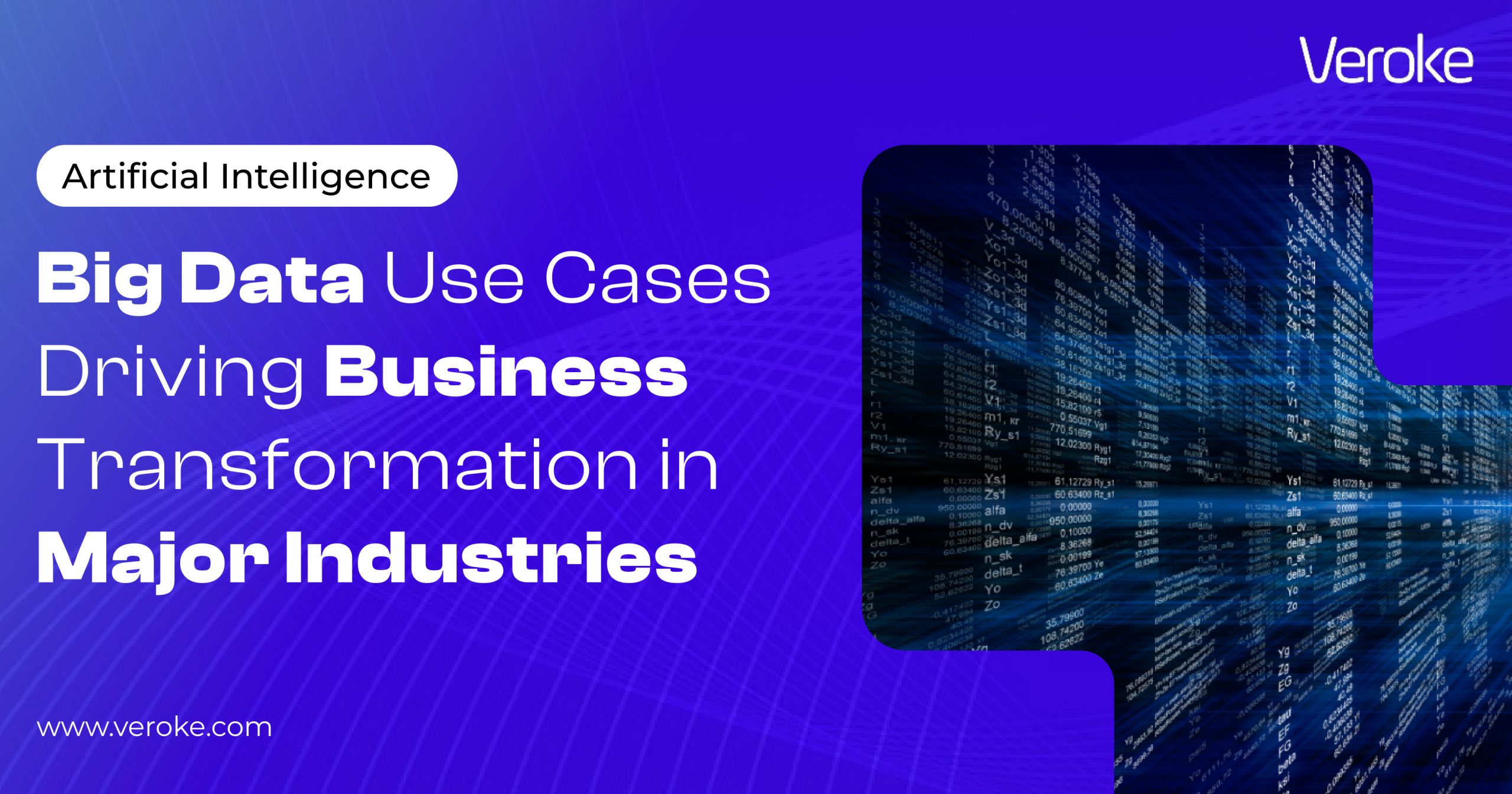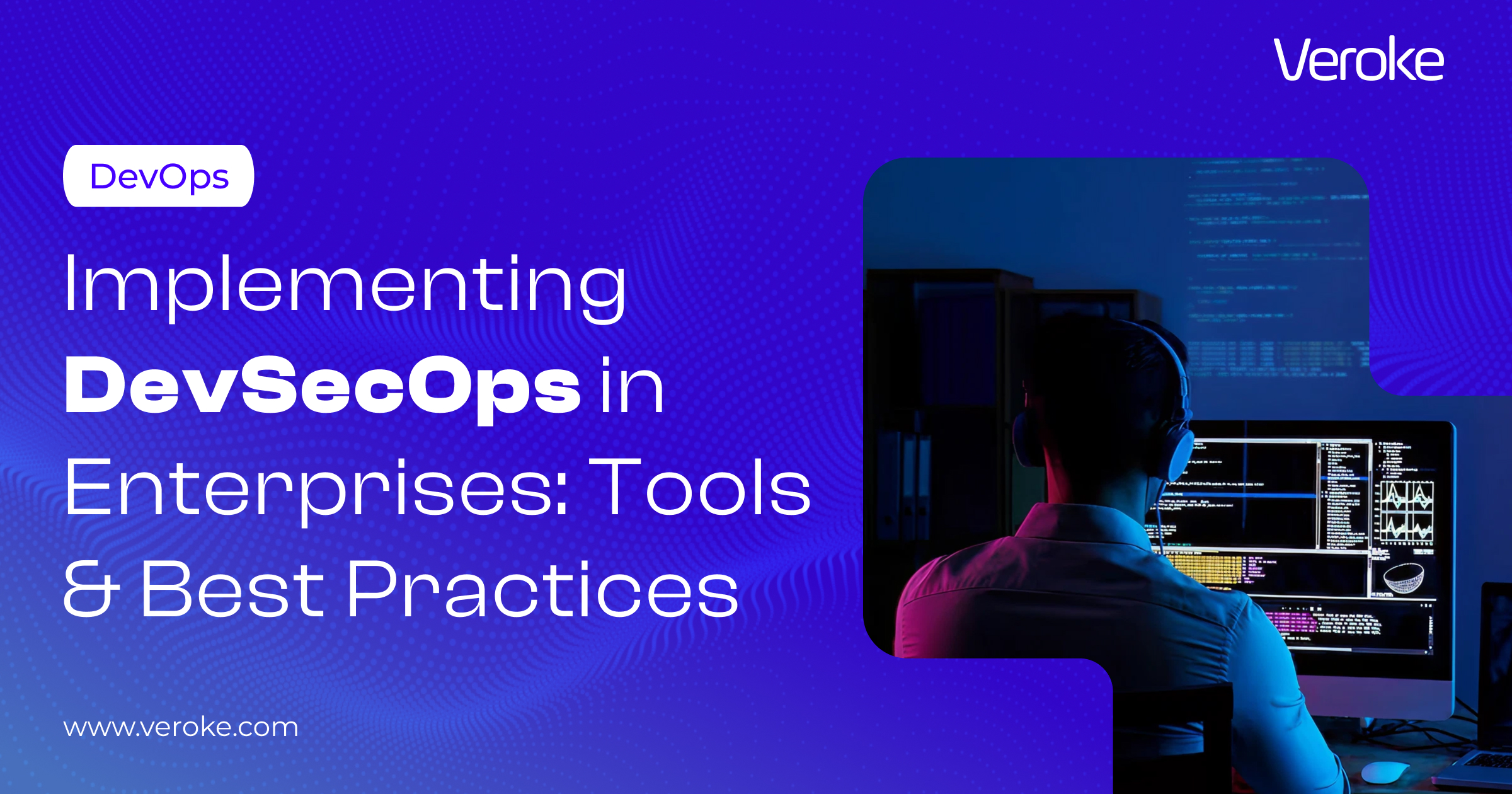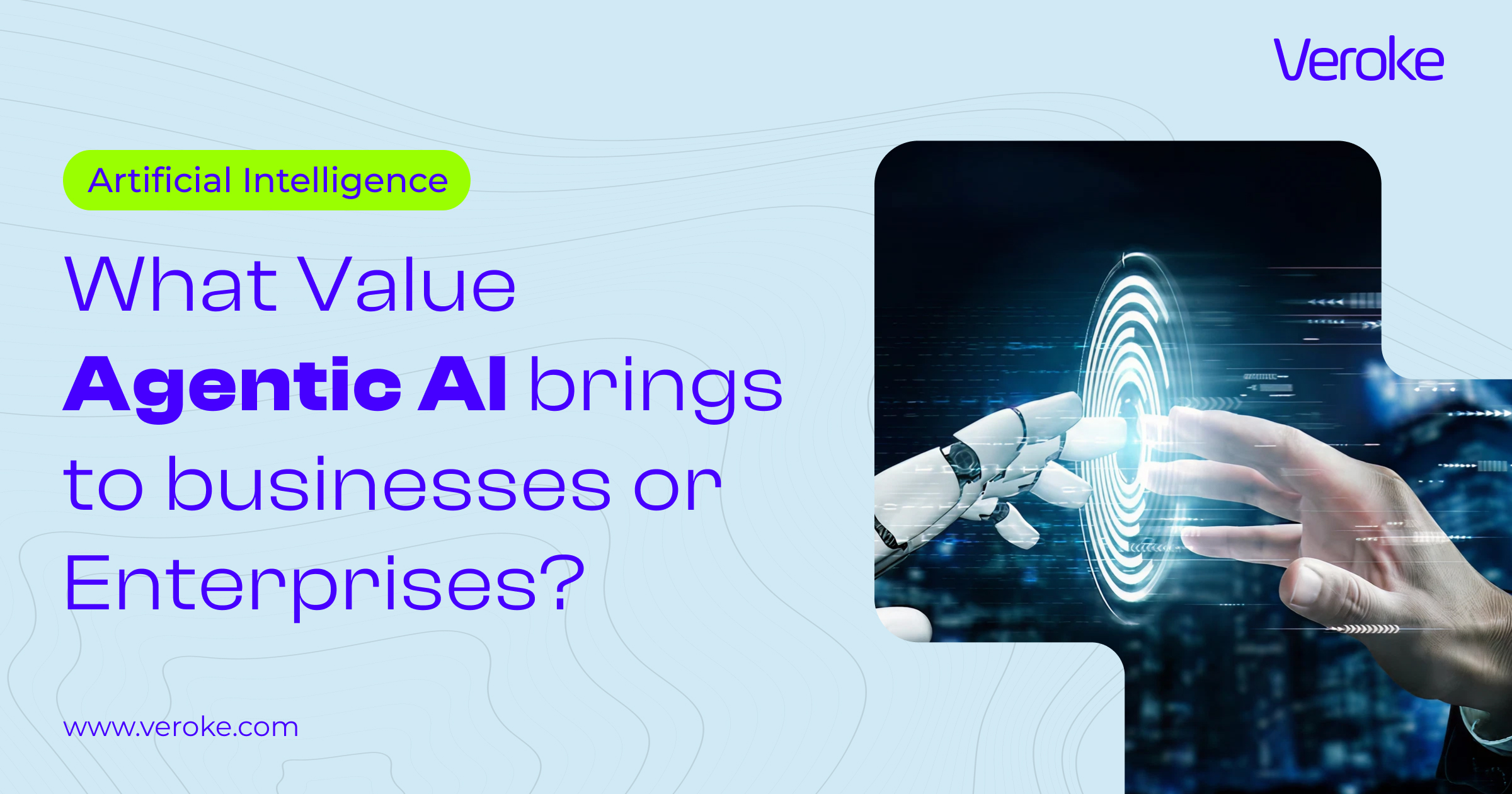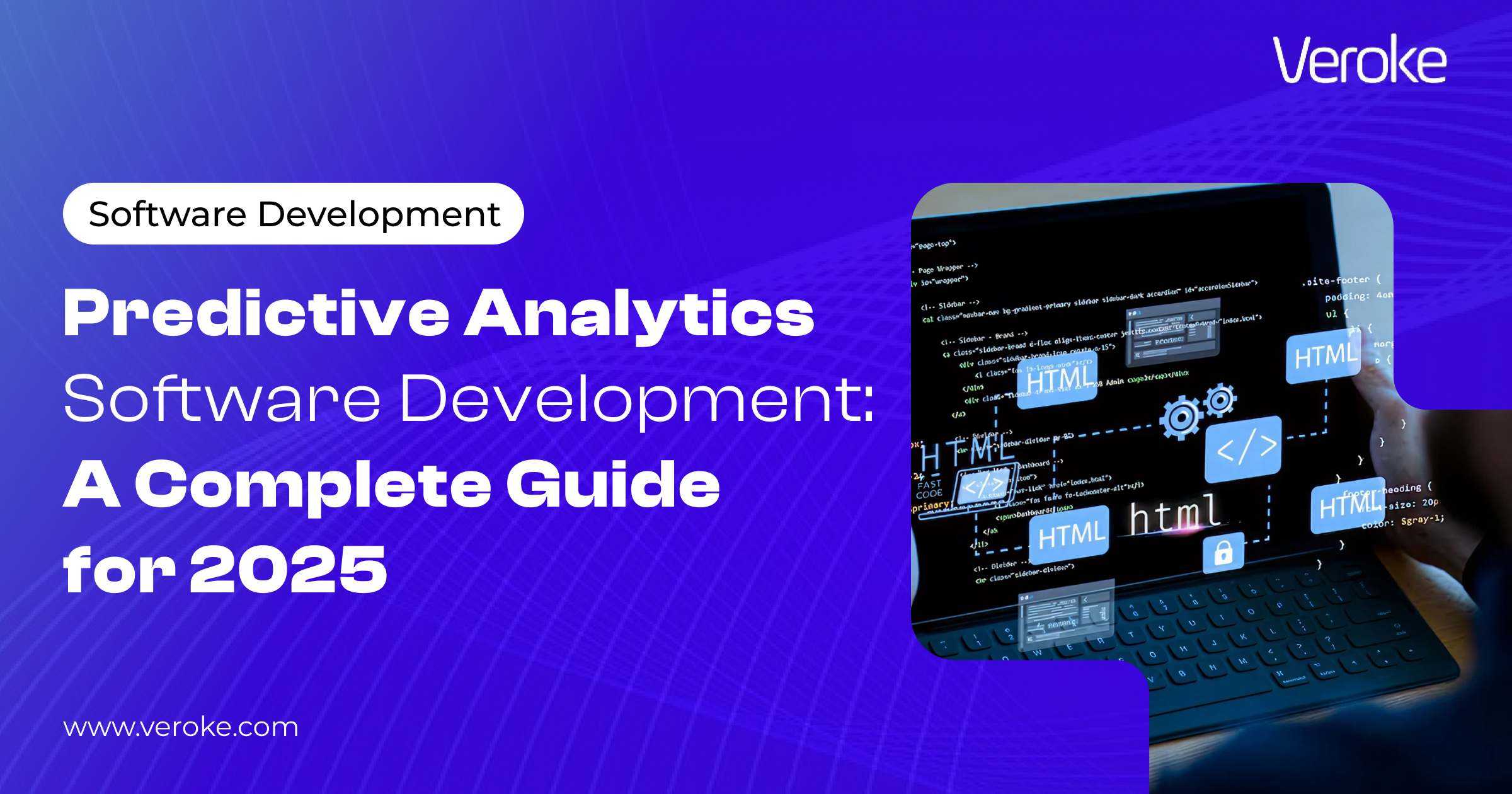Overview
Inside Saudi’s Tech Transformation
Get exclusive weekly insights into how the Kingdom is powering Vision 2030.
TL;DR
- With over 400 million terabytes generated daily, businesses are using Big Data to turn raw information into real-time insights and smarter decisions.
- From predictive healthcare and AI-driven supply chains to fraud prevention in FinTech, personalized learning in EdTech, and data-powered e-commerce, Big Data is driving efficiency and innovation everywhere.
- Big Data tools like Apache Kafka, Spark, Snowflake, and Tableau enable seamless data ingestion, processing, and visualization to uncover patterns and predict outcomes.
- Big Data helps organizations enhance customer experiences, reduce risks, and unlock new revenue opportunities through actionable insights.
- Veroke help businesses harness AI-driven Big Data platforms – from predictive analytics to cloud-native architectures – turning massive data into measurable growth and competitive edge.
Data is everywhere, generated by apps, IoT sensors, transactions, and digital interactions every second.
In fact, humans generate over 400 million terabytes of data every single day, and by 2025, global data creation is expected to reach 181 zettabytes.
But having large volumes of data isn’t enough. What truly drives business transformation is the ability to analyze, interpret, and act on that data in meaningful ways.
This is where Big Data comes into play. It enables organizations to uncover hidden patterns, predict future trends, and make decisions based on real-time insights.
From enhancing customer experiences to optimizing internal operations, Big Data is reshaping how businesses create value and stay competitive.
In this blog, we’ll explore practical, high-impact use cases that show how companies across various industries are using Big Data to drive innovation, boost efficiency, and unlock new growth opportunities.
Understanding Big Data Technology
Ever wonder how Netflix knows exactly what you want to watch next? Or how Amazon seems to read your mind with those eerily perfect product recommendations? The answer lies in Big Data, and the best thing is it’s not just limited to tech giants anymore.
The importance of big data technology in various sectors is gaining more attention. In simple terms, big data is a system or tool that collects, stores, processes, and analyzes massive volumes of structured, semi-structured, and unstructured data.
These tools include data lakes, real-time processing engines like Apache Kafka, analytics platforms like Spark, and cloud-based infrastructures such as Snowflake and AWS Redshift.
Key components include:
- Data ingestion (e.g., Kafka, Flume)
- Data storage (e.g., Hadoop HDFS, Amazon S3)
- Data processing (e.g., Spark, Databricks)
- Analytics & visualization (e.g., Power BI, Tableau, Looker)
Together, these platforms make it possible to detect patterns, generate predictions, and automate decision-making across industries.
Here’s a quick look at popular tools across each layer of the big data architecture:
Layer | Purpose | Example Tools |
Data Ingestion | Capture real-time or batch data | Apache Kafka, Apache Flume, NiFi |
Data Storage | Store structured/unstructured data | Hadoop HDFS, Amazon S3, Snowflake |
Data Processing | Process large datasets | Apache Spark, Flink, Databricks |
Data Analytics | Run queries, apply ML, gain insights | Hive, Presto, Redshift, TensorFlow |
Visualization | Present data via dashboards | Power BI, Tableau, Looker |
Industry-Wise Big Data Use Cases Driving Business Transformation
The power of Big Data can be applied in countless sectors to solve challenges and unlock new opportunities.
In the following sections, we will explore how Big Data is transforming some of the major industries, including healthcare, finance, and more, highlighting key use cases and benefits in each field.

Big Data in Major Industries
• Healthcare Industry: Data-Driven Patient Care
The use of Big Data is transforming healthcare by providing actionable insights that improve treatments, save lives, and improve system performance.
Let’s explore some of the most impactful use cases that are shaping the future of medicine and patient care.
- Predictive Analytics
Imagine being able to detect a heart attack before it happens. That’s what predictive analytics is capable of doing. By analyzing vast amounts of patient data, including electronic health records (EHRs), wearable device data, and even genomic profiles, healthcare providers can identify patients at high risk of developing certain conditions.
This enables early interventions and personalized care plans that can significantly improve outcomes. Wearable devices like smartwatches are being used to monitor heart rates, detect irregularities, and alert both patients and doctors in real time, potentially preventing life-threatening events.
2. Personalized Medicine
Big data allows doctors to customize treatments based on an individual’s genetic makeup, lifestyle, and medical history. Analysis of complex datasets, including genomic information and clinical records, allows doctors to prescribe medicine or treatments that are far more targeted and effective.
Oncology, for instance, uses genomic data to pinpoint the most effective cancer therapies based on a patient’s unique genetic mutations.
3. Telemedicine and Remote Monitoring
Big data is also playing a key role in monitoring patients remotely, which is becoming increasingly important with the growth of telemedicine. Real-time analytics of data collected from different devices and remote monitoring tools allow healthcare professionals to track patient health from afar and step in when necessary.
It’s especially valuable for managing chronic conditions and reaching underserved communities. Telehealth is on the rise, with virtual consultations and follow-ups decreasing hospital visits for diabetic and hypertensive patients and extending mental health services to underserved rural areas.
4. Data-Driven Public Health
Big data’s impact reaches beyond the individual, improving healthcare for entire populations. By analyzing health trends across regions, age groups, or demographics, healthcare organizations can acquire an understanding of disease trends, treatment success, and healthcare resource utilization.
These insights help create more efficient systems and data-driven public health policies. Analyzing regional health data can reveal rising flu activity, allowing healthcare providers to launch targeted vaccination campaigns in advance.
5. Operational Efficiency
Not only that, data also helps businesses in optimizing their operations. From optimizing staff schedules to managing inventory and handling medication supplies, data analytics can improve every aspect of a healthcare facility’s operations.
Hospitals are now using data to predict peak patient admission times and align staffing accordingly, improving care quality and reducing burnout.
• Supply Chain Industry: End-to-End Optimization
Supply chain serves as the backbone that supports every aspect of a business. With dozens of moving parts, from raw material sourcing to last-mile delivery, staying on top of it all can feel like solving a puzzle with constantly shifting pieces. That’s where big data analytics is changing the game.
Let’s explore how businesses are putting big data to work across the entire supply chain sector.
1. Predictive Maintenance
Equipment failure is a supply chain nightmare. Unexpected downtime can halt production and be costly. With predictive maintenance powered by big data, manufacturers can monitor machinery in real time with AI and advanced technology. By analyzing this data, they can spot patterns that signal wear and tear, allowing for proactive maintenance before something breaks.
Factories use predictive models to analyze vibration, temperature, and usage data from equipment. This helps them schedule repairs before a breakdown happens, reducing downtime and extending machine lifespan.
2. Quality Control
Big data enables manufacturers to maintain high product quality through real-time defect detection. It allows companies to track production data and flag anomalies instantly. This ensures that issues are caught early, preventing flawed products from reaching customers.
Automotive companies monitor sensor data during assembly to detect deviations from quality standards. If a part fails to meet specifications, alerts are triggered immediately, saving time, money, and reputation.
3. Inventory Management
Overstocking ties up capital, whereas under-stocking results in missed sales. Big data helps businesses find the perfect balance between the two.
By analyzing sales history, seasonality, and market trends, businesses can accurately forecast demand and adjust stock levels accordingly. This leads to fewer stock-outs, lower holding costs, and faster order fulfillment. Manufacturers use demand forecasting models to optimize reorder points and safety stock, making inventory management more agile and cost-efficient.
4. Supply Chain Visibility
Supply chain blind spots lead to delays, inefficiencies, and missed opportunities. Big data provides end-to-end visibility, offering real-time insights into supplier performance, shipment statuses, and inventory movement. This transparency empowers better planning, quicker decision-making, and faster responses to disruptions.
Companies track shipments in real-time, analyze supplier delivery patterns, and optimize logistics routes to reduce lead times and avoid costly surprises.
5. Better Product Design
Customer feedback is a goldmine, if you know how to mine it. Big data allows companies to analyze feedback from multiple sources (e.g., product reviews, service logs, usage data) to improve design and functionality. It turns raw opinions into actionable insights that lead to better, more user-friendly products.
This allows companies to analyze usage patterns and service reports from their equipment to identify design flaws and improve future models, saving money and enhancing user satisfaction.
• FinTech: Smarter, Safer Finance
In FinTech, data is more than just numbers, it’s the foundation of innovation. From mobile banking apps to cryptocurrency platforms and AI-powered investment tools, FinTech companies thrive on one key asset: information.
Big data analytics is transforming the financial services landscape by enabling smarter decision-making, reducing risks, and delivering hyper-personalized customer experiences.
Let’s dive into the most powerful ways big data is driving transformation in the FinTech sector.
1. Fraud Detection and Prevention
Fraud is one of the biggest threats in FinTech, but with big data, companies are now fighting back smarter and faster. By analyzing transactional data, user behavior, device information, and historical fraud patterns in real time, FinTech platforms can detect unusual activities and flag potential fraud.
Digital banks use machine learning models trained on millions of transactions to spot anomalies, like an overseas login at midnight or a sudden spike in fund transfers, and automatically freeze suspicious accounts before damage is done.
2. Credit Scoring and Risk Assessment
Traditional credit scoring models are outdated, especially for customers without a long credit history. Big data allows FinTech companies to assess creditworthiness using alternative data, such as mobile usage, social media behavior, utility payments, and online shopping patterns.
FinTech lenders in emerging markets use data from mobile wallets and bill payment apps to evaluate loan applicants who lack formal credit histories, unlocking financial inclusion for millions.
3. Personalized Financial Products
The current user market demands more and more personalized products. Big data enables hyper-personalization by analyzing a user’s spending habits, income patterns, investment behavior, and even life events to recommend customized products.
Robo-advisors analyze investor profiles and real-time market data to deliver personalized investment strategies and risk-adjusted portfolios without human intervention.
4. Real-Time Analytics for Trading and Investment
Speed is everything in the world of finance. Big data allows FinTech platforms to process massive volumes of market data in real time, helping traders make faster, more informed decisions.
Quantitative trading platforms use big data to track market sentiment, social media trends, historical price movements, and news headlines to execute algorithmic trades within milliseconds.
5. Regulatory Compliance and Reporting
The increasing regulatory burden on FinTech companies can be eased through data analytics; automating data collection, monitoring, and reporting across their operations simplifies compliance.
RegTech solutions use big data to flag non-compliant transactions, detect money laundering patterns, and ensure adherence to anti-fraud regulations, reducing manual workload and compliance risk.
• EdTech: Adaptive Learning at Scale
Education is no longer limited to classrooms, chalkboards, or textbooks. With the rise of EdTech, learning has gone digital, personalized, and on-demand. But behind every intelligent course recommendation, performance dashboard, or adaptive quiz lies one powerful engine: big data.
Let’s explore how big data is transforming EdTech sector and the future of learning itself.
1. Personalized Learning Experiences
Every learner is unique. Big data empowers EdTech platforms to analyze user behavior, like learning speed, quiz results, content preferences, and engagement patterns, to customize learning paths in real time.
Platforms like Coursera use big data to recommend personalized content based on past performance and interests, making education more relevant, engaging, and effective for each learner.
2. Student Performance Tracking
Big data allows educators to track student progress continuously and detect patterns that indicate academic struggles before they escalate.
Learning management systems (LMS) use predictive analytics to identify students at risk of falling behind by monitoring login frequency, assignment submissions, and test scores, triggering automated support or tutor interventions.
3. Curriculum Optimization
Not all content resonates equally. Big data helps EdTech companies analyze which lessons are most engaging, which assessments are too easy or too hard, and where students tend to drop off.
EdTech platforms analyze time spent on specific lessons, feedback scores, and completion rates to refine course content, improve learning outcomes, and maximize user satisfaction.
4. Improving Student Retention and Engagement
Retention is a major challenge in online education. Data allows platforms to analyze learner engagement trends and identify potential dropouts.
EdTech firms can track metrics such as video watch time, quiz attempts, and inactivity periods. These insights can be used to trigger timely nudges, reminders, or incentives that help keep learners motivated and engaged.
5. Career Path Prediction and Skill Gap Analysis
EdTech platforms are now looking beyond coursework. By analyzing learner behavior, performance, and career interests, big data can predict suitable career paths and identify skill gaps.
Platforms like LinkedIn Learning or Udemy analyze course completions, job trends, and industry needs to recommend high-impact courses that align with career goals.
• E-commerce: Personalization at Scale
In the quick world of e-commerce, every click, scroll, and purchase tells a story, and big data is the storyteller. From personalized recommendations to demand forecasting, it is helping e-commerce brands decode customer behavior, optimize operations, and create seamless shopping experiences that keep buyers coming back.
As online shopping becomes more competitive, e-commerce companies are leveraging big data not just to stay ahead, but to set the pace. Here’s how:
1. Hyper-Personalized Shopping Experiences
Big data allows e-commerce businesses to analyze user behavior, including search history, purchase patterns, cart activity, and session duration. These insights power tailored product recommendations and personalized content, enhancing the overall shopping experience.
Amazon’s recommendation engine, powered by massive amounts of user data, is responsible for over 35% of its revenue.
2. Dynamic Pricing and Demand Forecasting
E-commerce is fast-paced, and pricing needs to keep up. With the help of data, retailers can monitor competitor pricing, demand trends, inventory levels, and customer behavior to adjust prices in real time.
Online fashion retailers can also utilize predictive analytics to forecast demand for trending styles and adjust pricing based on stock levels, time of day, or even weather conditions.
3. Customer Segmentation and Targeted Marketing
Big data allows businesses to segment customers into precise groups based on demographics, behavior, preferences, and lifetime value. This enables targeted marketing campaigns that convert.
A skincare brand may use data analytics to send one type of promotional email to repeat buyers of anti-aging products, and another to new customers browsing acne treatments, boosting ROI and engagement.
4. Fraud Detection and Transaction Security
Beyond personalization and analytics, data plays a key role in preventing fraud in e-commerce. By analyzing user behavior, payment patterns, and real-time anomalies, platforms can proactively identify suspicious activity.
Machine learning models are used to detect signs of fraud, such as mismatched billing details, unusually high order values, or rapid-fire transactions. This can trigger instant verification steps or security alerts to protect both businesses and customers.
5. Enhanced Customer Support with Chatbots
Today’s shoppers expect instant, helpful customer service. Big data enhances chatbot performance and customer support by analyzing common queries, purchase history, and sentiment from reviews or feedback.
E-commerce chatbots use past interactions and order data to provide faster issue resolution, while sentiment analysis helps flag negative reviews for human follow-up.
A Quick Overview of Use Cases Across Industries
From healthcare to e-commerce, big data’s impact is undeniable. Here’s a quick comparison of how different industries are leveraging it:
Industry | Use Case | Benefit |
Healthcare | Predictive Analytics | Prevent chronic conditions early |
Supply Chain | Predictive Maintenance | Reduce equipment downtime, optimize cost |
FinTech | Fraud Detection | Real-time anomaly flagging |
EdTech | Personalized Learning | Adaptive pathways per learner |
E-commerce | Dynamic Pricing & Segmentation | Boost conversions, manage inventory |
From Data to Decisions: Accelerating Business Growth
Big data is no longer optional. For companies that want to scale, personalize experiences, and operate more intelligently, it’s foundational.
But collecting data is just the beginning. You need the right strategy, tools, and expertise to turn information into impact.
That’s where Veroke comes in.
We build AI-driven big data platforms tailored to your business goals, from predictive analytics to cloud-native data pipelines.
From custom data analytics platforms to end-to-end enterprise integrations, our team is here to turn your data into a strategic advantage. Get in touch to discuss your big data transformation today.
FAQs
1. What is an example of a business that was transformed using big data?
There are many examples of businesses that are transformed with the help of big data. Starbucks uses big data to customize its product offerings and site selection. Apple applies data analytics to improve customer experiences across devices and services.
2.How is big data transforming business?
Big data is allowing businesses to process vast amounts of information almost in real-time, enabling businesses to make strategic decisions backed by accurate data. Also, data analytics empower companies to develop new and enhanced products and services.
3. What are the uses of big data in business?
Data has countless applications across industries, supporting everything from customer segmentation and product development to fraud detection, market analysis, and operational efficiency.
Want to know more about our service.
Inside Saudi’s Tech Transformation
Get exclusive weekly insights into how the Kingdom is powering Vision 2030.
Transform your Ideas into a Digital Reality
Get scalable, customized solutions for your business.




